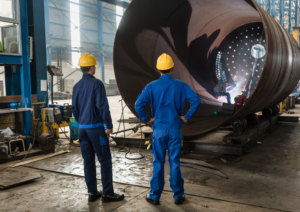The COVID-19 pandemic brought forth a whole host of complications as nations saw their borders being shuttered. Locally, the general populace were ushered into their homes and a mandatory quarantine was enforced in many countries. Defaulting to working from home and interacting purely with direct family members, many of us were forced to adapt to this new normal.
Conversely, not everyone was this lucky. As many entities turned towards remote interfacing, frontline services such as schools and hospitals had to adapt to this sudden change. Students of all ages had to pivot towards remote learning, while hospitals had to implement teleconsulting as a key measure for non-emergency patients. In countries like Singapore, where almost 100% of the population possessed internet access at home, adapting to such changes seemed like a marginal task. The same couldn’t be said for its ASEAN neighbours such as Cambodia, which possessed only a quarter of Singapore’s internet access at home.
Looking at these factors, the need for social infrastructure appears abundantly clear. The question is how stakeholders can further advance the progress of social infrastructure.
Benefits Of Investing In Social Infrastructure
Social infrastructure is an all encompassing concept that covers the variety of physical and natural endowments of, and facilities within, a place. This includes the medley of public services delivered to the general populace. Key elements of social infrastructure include health-related services, education and training, social housing programs, police and other public safety provisions, as well as culture and recreational facilities.
As the need for social infrastructure becomes more dire and the Asian private equity market returns to pre-pandemic levels of interest, savvy investors ought to turn their eyes towards investing in the social infrastructure in countries to reap their rewards. For example, contributions towards building schools and more institutes of higher learning serves to benefit the overall education standard in a country. Like the saying goes “A rising tide lifts all boats”, the positive feedback loop that comes from the benefits of investing in social infrastructure only serves to elevate current standards.
Other ways that investors can jump on improving social infrastructure comes in the form of propagating sustainability. As opposed to short-term profit targeted goals, investors should instead aim for long-term sustainable growth. Similar to how one would manage their portfolio of equities, investors looking towards social infrastructure must avoid the “one and done” approach. Taking a more structured and long term approached towards a country’s infrastructure and reaping the benefits as the system develops is just one way investors can attain further value when it comes to investing in social infrastrcuture.
How Investing In Social Infrastructure Makes A Difference
Chief amongst potential opportunities in community-led social infrastructure stands sustainable infrastructure. Due to global rapid growth and a massive uptick in consumption, the number one priority for many countries as espoused by world leaders at the 2015 United Nations Sustainable Development Summit is access to affordable, reliable, and sustainable modern energy for all. A basic necessity that forms a crucial aspect of social infrastructure, investors should be looking to channel a portion of their investments towards upgrading and improving the energy infrastructure in developing regions. The need for clean water and electricity will be ever present regardless of country, and investors should seek to capitialise and make waves by ensuring these sources are sustainable, reliable, and affordable.
Another angle ripe for investment in social infrastructure entails public facilities such as transport. A stable and well-connected network for public transport diminishes a population’s reliance on cars, and cuts down its carbon footprint. By making public transport accessible to everyone, this also removes the income barrier that plagues many who live hand to mouth, and nary possess the disposable income to purchase and maintain a vehicle for transport. By bridging these gaps and making places more geographically accessible, investors can make a difference in these developing areas in a practical and sustainable way.
Invest In Social Infrastructure To Support Local Communities
ASEAN countries are still struggling to recover from the impacts of COVID-19, and social infrastructure will undoubtedly play a big part in that journey. Investing in social infrastructure further helps unlock that recovery, to help countries and its respective people get back on its feet.





